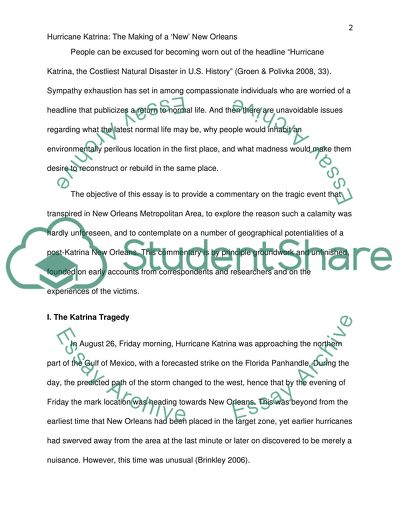Cite this document
(Hurricane Katrina: The Making of a New New Orleans Term Paper, n.d.)
Hurricane Katrina: The Making of a New New Orleans Term Paper. Retrieved from https://studentshare.org/social-science/1533426-hurricane-katrina-master-essay
Hurricane Katrina: The Making of a New New Orleans Term Paper. Retrieved from https://studentshare.org/social-science/1533426-hurricane-katrina-master-essay
(Hurricane Katrina: The Making of a New New Orleans Term Paper)
Hurricane Katrina: The Making of a New New Orleans Term Paper. https://studentshare.org/social-science/1533426-hurricane-katrina-master-essay.
Hurricane Katrina: The Making of a New New Orleans Term Paper. https://studentshare.org/social-science/1533426-hurricane-katrina-master-essay.
“Hurricane Katrina: The Making of a New New Orleans Term Paper”, n.d. https://studentshare.org/social-science/1533426-hurricane-katrina-master-essay.


